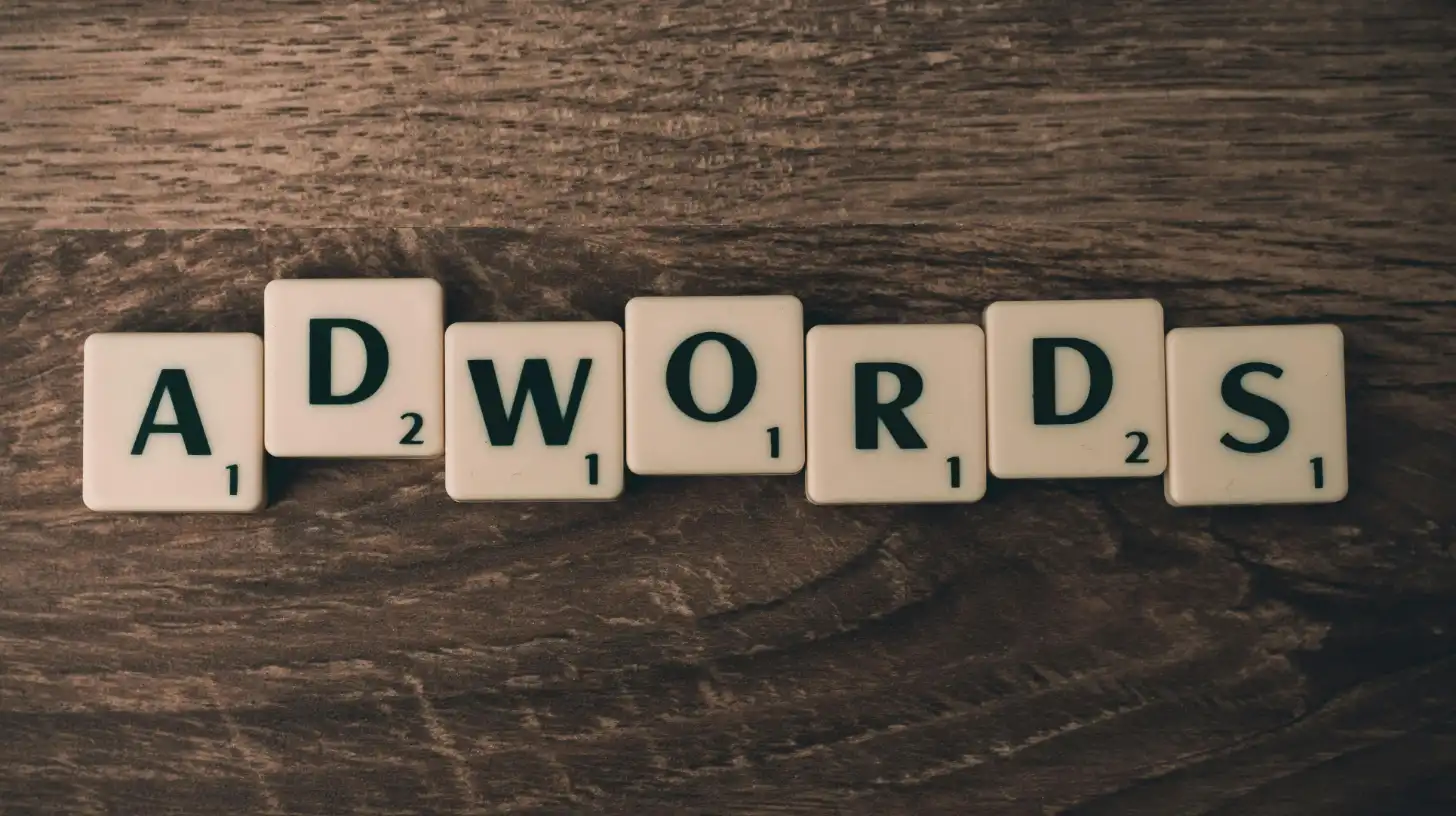Now more than ever, auto detailing shops need to harness the power of online advertising to stay competitive. Google Pay Per Click Ads for auto detailing businesses offer a powerful tool for reaching potential customers and growing your empire. This article explores how automotive detailing shops can effectively use Google PPC ads to attract more clients, increase visibility, and boost their bottom line.

Key Takeaways
- Google PPC ads can significantly increase visibility for auto detailing shops
- Proper keyword research and ad targeting are crucial for success
- Creating compelling ad copy and landing pages can improve conversion rates
- Tracking and analyzing performance metrics helps optimize ad campaigns
- A well-managed PPC campaign can provide a strong return on investment for auto detailing businesses
Introduction
As an auto detailing shop owner, you know that keeping cars spotless is your specialty. But in today’s digital world, it’s not enough to just be great at what you do – you also need to make sure potential customers can find you online. That’s where Google Pay Per Click (PPC) ads come into play.
Google PPC ads are a form of online advertising that allows you to display your ads to people searching for auto detailing services in your area. The best part? You only pay when someone clicks on your ad. This makes it a cost-effective way to reach potential customers who are already interested in what you offer.
In this article, we’ll uncover how Google PPC ads work, why they’re important for auto detailing shops, and how you can use them to grow your company. Whether you’re new to digital advertising or looking to improve your existing campaigns, this guide will provide you with valuable insights and strategies to boost your online presence and attract more customers.
Understanding Google Pay Per Click Ads

Before we get into the specifics of using PPC ads for your auto detailing shop, let’s break down what Google PPC ads are and how they work.
What are Google PPC Ads?
Google PPC ads are a type of online advertising where you create ads that appear in Google’s search results. When someone searches for keywords related to your business, your ad may show up at the top or bottom of the search results page. You only pay when someone clicks on your ad, hence the name “pay-per-click.”
How do Google PPC Ads Work?
- You create an ad: You write an ad that describes your auto detailing services and choose keywords that you want your ad to show up for.
- Google displays your ad: When someone searches for those keywords, Google may show your ad in the search results.
- People click on your ad: If someone is interested in your services, they click on your ad.
- You pay for the click: You’re charged a small fee (larger fees for paint protection services) each time someone clicks on your ad.
- Potential customers visit your website: The person who clicked on your ad is taken to your website, ideally a specific landing page, where they can learn more about your services and potentially book an appointment.
Why are Google PPC Ads Important for Auto Detailing Shops?
Google PPC ads can be a game-changer for auto detailing shops. Here’s why:
- Targeted advertising: You can show your ads to people who are actively searching for auto detailing services in your area.
- Cost-effective: You only pay when someone clicks on your ad, making it a budget-friendly option for small businesses.
- Measurable results: Google provides detailed data on how your ads are performing, so you can see exactly what’s working and what’s not.
- Quick results: Unlike search engine optimization (SEO) which can take months to show results, PPC ads can start driving traffic to your website immediately.
- Flexibility: You can easily adjust your ads, budget, and targeting at any time to improve your results.
Setting Up Your Google PPC Ad Campaign

Now that you understand the basics, let’s walk through the process of setting up a Google PPC ad campaign for your auto detailing shop.
Step 1: Create a Google Ads Account
If you haven’t already, you’ll need to set up a Google Ads account. Go to ads.google.com and follow the prompts to create your account.
Important: Make sure you select the correct time zone for your service area. Otherwise, you may have create a new account later down the road and start all over again.
Step 2: Define Your Campaign Goals
Before you start creating ads, it’s important to define what you want to achieve. Some common goals for auto detailing shops include:
- Increasing website traffic
- Generating more phone calls
- Booking more appointments
- Promoting specific services (e.g., ceramic coating, paint protection film)
Step 3: Choose Your Keywords
Keywords are the foundation of your PPC campaign. These are the words and phrases that people type into Google when they’re looking for auto detailing services. Some examples might include:
- “Auto detailing near me”
- “Car detailing services”
- “Professional car cleaning”
- “Mobile auto detailing”
To find the best keywords for your business, use tools like Google’s Keyword Planner or consider the services you offer and how potential customers might search for them. Make sure you are only targeting your service area though, and possibly surrounding cities.
Step 4: Create Your Ad Campaigns, Then Ad Groups
Ad Campaigns help you organize your ad groups based on themes. For an auto detailing shop, you might have campaigns like:
- Auto Detailing
- Paint Correction
- Ceramic Coating
- Clear Bra for Cars
- Window Tint
Step 5: Write Compelling Ad Copy
Your ad copy needs to grab attention and convince people to click. Here are some tips:
- Highlight what makes your auto detailing shop unique
- Include a clear call-to-action (e.g., “Book Now,” “Get a Free Quote”)
- Mention any special offers or promotions
- Use keywords in your ad copy to improve relevance
Here’s an example of effective ad copy for an auto detailing shop:
Professional Auto Detailing | [Your City]
5-Star Rated Service. Book Now & Save 10%!
Interior & Exterior Detailing. Free Quotes.
www.yourautodetalingshop.com
Step 6: Set Your Budget and Bids
Decide how much you’re willing to spend per day on your ads. Google Ads allows you to set a daily budget, and you can adjust this at any time.
You’ll also need to set your bids, which is the maximum amount you’re willing to pay for a click on your ad. Google offers several bidding strategies, but for beginners, it’s often best to start with manual bidding so you have more control over your costs.
Step 7: Create Landing Pages
When someone clicks on your ad, they should be taken to a relevant page on your website (called a landing page). This page should match the content of your ad and provide the information the person is looking for. For example, if your ad is about interior detailing, the landing page should focus on your interior detailing services.
Best Practices for Auto Detailing PPC Ads

To get the most out of your Google PPC ads, follow these best practices:
- Use location targeting: Make sure your ads are only shown to people in the geographic areas you serve.
- Include negative keywords: Add keywords you don’t want your ad to show up for. For example, if you don’t offer mobile detailing, you might add “mobile” as a negative keyword.
- Use ad extensions: These allow you to add extra information to your ads, such as your phone number, location, or links to specific pages on your website. This practice also elongates your ads, thus taking up more ad real estate.
- Create mobile-friendly ads and landing pages: Many people search for auto detailing services on their phones, so make sure your ads and website look excellent on mobile devices.
- Test different ad variations: Create multiple versions of your ads and see which ones perform best.
- Monitor and adjust your campaigns: Regularly check your ad performance and make adjustments to improve your results.
Tracking and Measuring Your PPC Success
To ensure your PPC campaigns are successful, you need to track and measure your results. Here are some key metrics to watch:
- Click-Through Rate (CTR): The percentage of people who click on your ad after seeing it.
- Conversion Rate: The percentage of people who take a desired action (like booking an appointment) after clicking on your ad.
- Cost Per Click (CPC): The average amount you’re paying for each click on your ad.
- Return on Ad Spend (ROAS): The amount of revenue generated compared to the amount spent on ads.
Google Ads provides detailed reports on these metrics and more. Regularly reviewing these reports can help you identify areas for improvement and optimize your campaigns for better results.
Case Study: Success with Google PPC Ads
Let’s look at a hypothetical case study to see how Google PPC ads can benefit an auto detailing shop.
“Sparkling Clean Auto Detailing” in Denver, Colorado, started using Google PPC ads to promote their services. They created separate ad campaigns for their main services: full detailing, paint correction, and paint protection. After running their campaign for three months, they saw the following results:
- 300% increase in website traffic
- 50% increase in phone calls
- 25% increase in bookings
- Return on Ad Spend (ROAS) of 400% (For every $1 spent on ads, they generated $4 in revenue)
The owner, Sarah Thompson, said, “Google PPC ads have transformed our business. We’re reaching customers we never would have found before, and our schedule is consistently full. It’s been a game-changer for us.”
Comparison: Google PPC Ads vs. Other Advertising Methods
To understand the value of Google PPC ads, let’s compare them to other common advertising methods for auto detailing shops:
| Advertising Method | Pros | Cons |
|---|---|---|
| Google PPC Ads | – Targeted to interested customers – Pay only for clicks – Measurable results – Quick to implement |
– Can be competitive – Requires ongoing management |
| Social Media Ads | – Visual appeal – Good for brand awareness – Demographic targeting |
– May reach less motivated buyers – Can be more expensive |
| Traditional Print Ads | – Local reach – Tangible presence |
– Limited targeting – Hard to measure results – Can be expensive |
| SEO | – Long-term benefits – Free organic traffic |
– Takes time to see results – Requires ongoing effort |
As you can see, while each method has its benefits, Google PPC ads offer a unique combination of targeting, measurability, and cost-effectiveness that can be particularly beneficial for auto detailing shops.
Common Mistakes to Avoid with Google PPC Ads
While Google PPC ads can be highly effective, there are some common pitfalls to watch out for:
- Neglecting negative keywords: Failing to use negative keywords can result in your ads showing up for irrelevant searches, wasting your budget.
- Sending all traffic to your homepage: Create specific landing pages for each ad group to improve relevance and conversion rates.
- Ignoring mobile users: Make sure your ads and landing pages are optimized for mobile devices.
- Not tracking conversions: Without proper conversion tracking, you won’t know which ads are actually generating business.
- Set-it-and-forget-it mentality: PPC campaigns require ongoing management and optimization for the best results.
- Broad match keywords only: While broad match keywords can increase your reach, they can also lead to irrelevant clicks. Use a mix of match types for best results.
Tips for Optimizing Your Auto Detailing PPC Campaigns
To get the most out of your Google PPC ads, consider these optimization tips:
- Use ad scheduling: If you notice that your ads perform better at certain times of day or days of the week, adjust your ad schedule accordingly.
- Implement remarketing: Show ads to people who have previously visited your website but didn’t book a service.
- Utilize customer match: Upload your customer email list to Google Ads to target your existing customers with special offers or new services.
- Experiment with different ad formats: Try responsive search ads, which allow you to enter multiple headlines and descriptions that Google will mix and match to find the best performing combinations.
- Focus on quality score: Improve your ad relevance, landing page experience, and expected click-through rate to boost your quality score, which can lead to better ad positions and lower costs.
- Use seasonal promotions: Adjust your ads and offers based on the season. For example, you might promote interior detailing more heavily during winter months.
Conclusion

Google Pay Per Click ads offer a powerful way for auto detailing shops to reach new customers and grow their businesses. By understanding how PPC ads work, setting up your campaigns effectively, and continuously optimizing your efforts, you can create a steady stream of new leads and bookings for your shop.
Remember, successful PPC advertising is an ongoing process. It requires regular attention, analysis, and adjustment. But with patience and persistence, Google PPC ads can become a valuable tool in your marketing arsenal, helping your auto detailing business shine brighter than ever before.
Frequently Asked Questions
How much should I budget for Google PPC ads?
Your budget will depend on factors like your location, competition, and goals. Start with a small daily budget (e.g., $20-$50 per day) and adjust based on results.
How long does it take to see results from Google PPC ads?
You can start seeing results immediately, but it often takes 2-3 months to optimize your campaigns for the best performance.
Can I run Google PPC ads myself, or should I hire an expert?
While it’s possible to run PPC ads yourself, many auto detailing shops find it beneficial to work with a digital marketing expert who can manage their campaigns more effectively.
How do I know if my PPC ads are working?
Track key metrics like click-through rate, conversion rate, and return on ad spend. Also, ask new customers how they found your business.
What’s the difference between Google PPC ads and Google Local Service ads?
Google PPC ads appear in search results and you pay per click. Google Local Service ads appear at the top of search results for certain services (including some auto detailing services in some areas) and you pay per lead.







